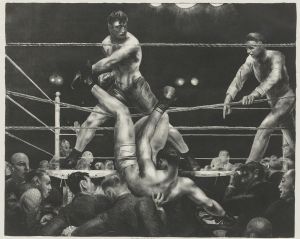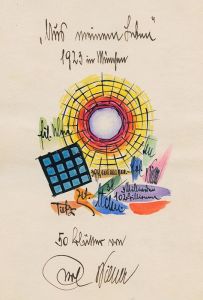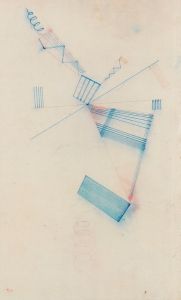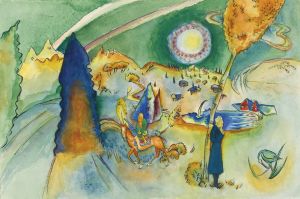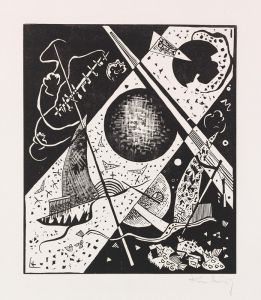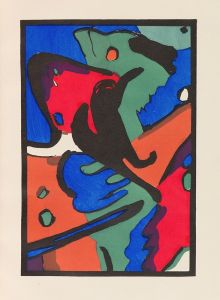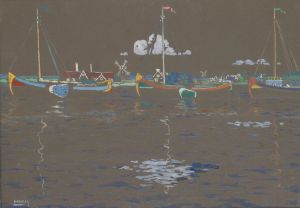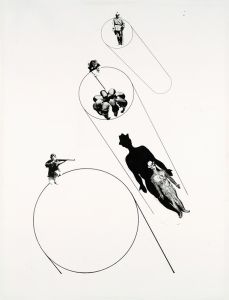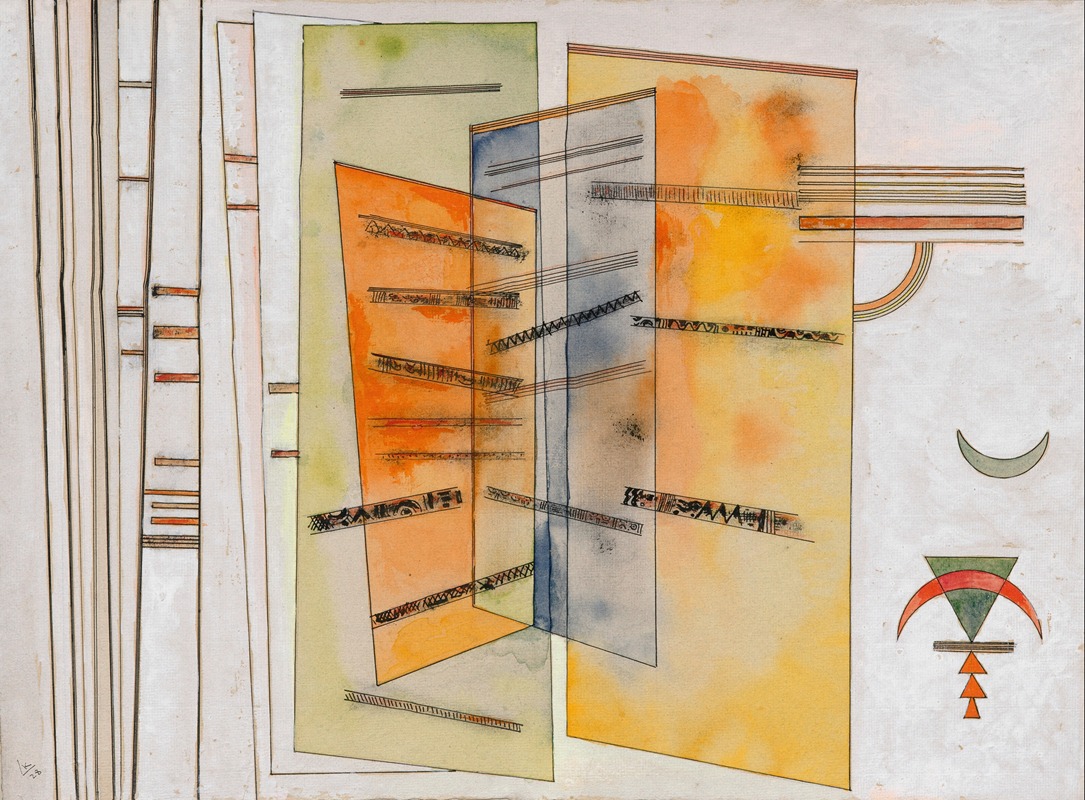
Nach Beiden Seiten
A hand-painted replica of Wassily Kandinsky’s masterpiece Nach Beiden Seiten, meticulously crafted by professional artists to capture the true essence of the original. Each piece is created with museum-quality canvas and rare mineral pigments, carefully painted by experienced artists with delicate brushstrokes and rich, layered colors to perfectly recreate the texture of the original artwork. Unlike machine-printed reproductions, this hand-painted version brings the painting to life, infused with the artist’s emotions and skill in every stroke. Whether for personal collection or home decoration, it instantly elevates the artistic atmosphere of any space.
Wassily Kandinsky, a pioneering figure in abstract art, created "Nach Beiden Seiten" in 1917. This painting is a notable example of Kandinsky's exploration of form and color, which marked a significant departure from representational art. Kandinsky, originally from Russia, was deeply influenced by his synesthetic experiences, where he could perceive colors as sounds and vice versa. This unique perception played a crucial role in his artistic development and is evident in his abstract works.
"Nach Beiden Seiten," which translates to "To Both Sides" in English, was created during a period of significant change and experimentation in Kandinsky's career. By 1917, Kandinsky had already established himself as a leading figure in the abstract art movement, having published his influential book "Concerning the Spiritual in Art" in 1911. This work laid the theoretical foundation for his approach to abstraction, emphasizing the spiritual and emotional power of art.
The painting itself is characterized by its dynamic composition and vibrant use of color. Kandinsky's work during this period often featured geometric shapes, lines, and a bold color palette, reflecting his interest in the emotional and spiritual resonance of abstract forms. "Nach Beiden Seiten" exemplifies these elements, showcasing Kandinsky's ability to convey movement and emotion through non-representational means.
Kandinsky's approach to art was heavily influenced by his belief in the synesthetic relationship between color and music. He often compared painting to composing music, where colors and shapes functioned like musical notes and chords. This analogy is evident in "Nach Beiden Seiten," where the interplay of colors and forms creates a visual rhythm that engages the viewer on a sensory level.
During the time "Nach Beiden Seiten" was created, Kandinsky was living in Russia, having returned from Germany at the outbreak of World War I. This period in Russia was marked by political upheaval and social change, which inevitably influenced the cultural landscape. Despite these challenges, Kandinsky continued to develop his artistic vision, contributing to the Russian avant-garde movement and participating in various exhibitions.
Kandinsky's work, including "Nach Beiden Seiten," played a significant role in the evolution of abstract art. His emphasis on the spiritual and emotional aspects of art challenged traditional notions of representation and paved the way for future generations of artists. Kandinsky's legacy is evident in the continued appreciation and study of his work, which remains influential in the fields of art theory and practice.
"Nach Beiden Seiten" is a testament to Kandinsky's innovative spirit and his commitment to exploring the possibilities of abstraction. Through his use of color, form, and composition, Kandinsky created a visual language that transcended the literal and engaged viewers on a deeper, more intuitive level. This painting, like much of Kandinsky's oeuvre, invites viewers to experience art as a profound and transformative encounter, reflecting the artist's belief in the power of art to evoke the spiritual and emotional dimensions of human experience.






